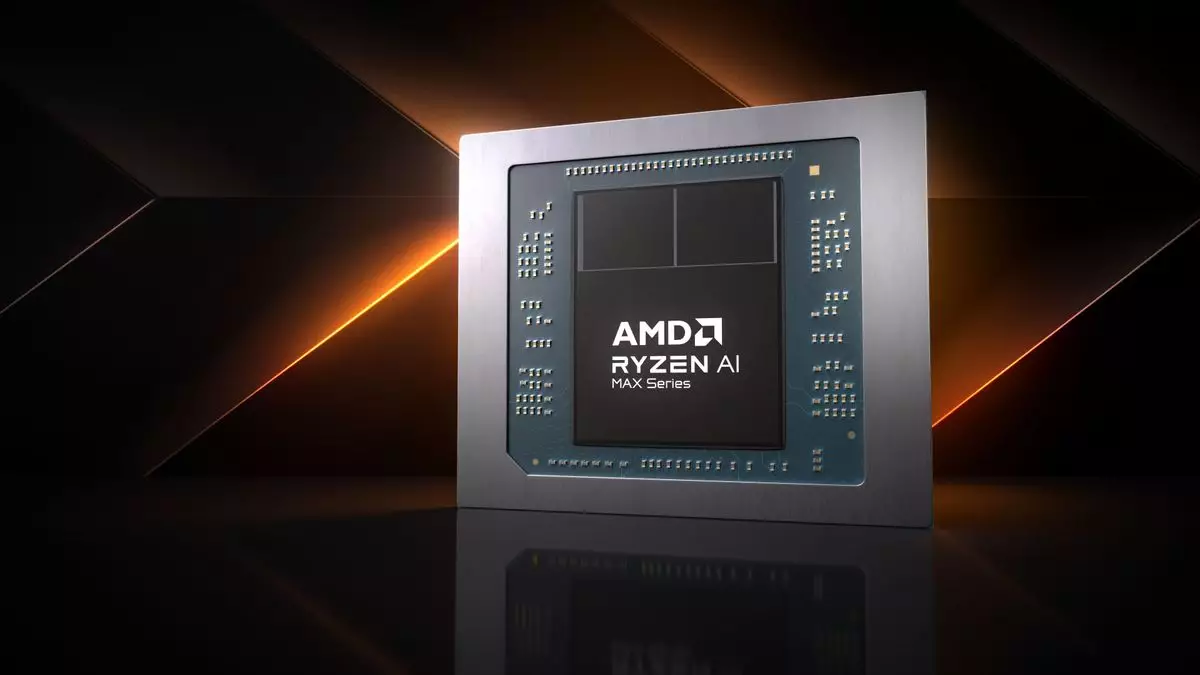As technological advancements continue to shape our computing experiences, AMD’s announcement of the Strix Halo APU has garnered attention and raised expectations among gaming enthusiasts and professionals alike. With recent benchmarks surfacing from 3DMark Time Spy, AMD’s intentions regarding performance capabilities are becoming clearer, though they may not align with initial hopes. This article delves into the details surrounding the Strix Halo’s performance metrics and what they mean for its potential positioning in the gaming landscape.
Benchmarks such as 3DMark Time Spy serve as essential tools for evaluating the performance of hardware components. They provide a standardized measure of a system’s capabilities, enabling consumers to make informed decisions. The early scores for the Strix Halo show promise but also indicate a performance level that might be slightly underwhelming. Reports suggest a GPU score of 10,106 and a CPU score of 5,571, which while commendable, places the APU in a competitive yet somewhat less impressive standing compared to other graphics solutions.
What particularly stands out is the discrepancy between the expectations set by AMD and the initial findings. The Strix Halo, featuring an integrated GPU—believed to be an AMD Radeon 8050S but likely closer to the 8060S—falls short of the anticipated graphics capabilities that AMD initially suggested. The company had hinted that this chip could rival performance typically associated with discrete GPUs, specifically the RTX 4070 series; however, current benchmarks position it closer to the performance of the RTX 4060 laptops.
The performance of an integrated GPU like that of the Strix Halo offers both advantages and disadvantages. On one hand, an effective integrated solution can simplify system design, reduce costs, and extend battery life, which are critical factors in the growing market of portable devices like gaming laptops and tablets. This is particularly significant since laptops equipped with a discrete GPU often compromise battery life for performance.
If the performance results hold steady across real-world gaming tests, the Strix Halo may well provide a transitional solution for gamers who prioritize efficiency without severely sacrificing graphical output. Nevertheless, it raises questions about the balance between performance and power consumption—an area where it seems AMD aims to excel.
AMD’s struggle with the Strix Halo APU, rumoured to have undergone multiple iterations before reaching its current state, points to the complexity and challenges involved in developing such advanced technology. The Strix Halo’s architecture, built upon AMD’s Zen 5 CPU cores, introduces new interconnectivity methods that could enhance efficiency. This innovation may pave the way for scalable performance across varied power settings, giving manufacturers the ability to tune systems based on the needs of users.
However, the implications of configurable wattage ranging up to 120W could create significant variations in performance depending on system conditions. For users, this means that the ultimate performance of their devices may heavily depend on how manufacturers implement power management strategies.
As the gaming industry continues to grow, competition among semiconductor manufacturers is more crucial than ever. While AMD’s Strix Halo APU showcases impressive capabilities for an integrated solution, the discrepancies between projected and actual performance figures highlight the unpredictability of technology advancements. Whether this APU can truly disrupt the dominance of discrete GPU solutions remains to be seen, but its early benchmarks certainly suggest it is a commendable effort towards achieving high-performance computing in a compact form factor.
Looking ahead, AMD’s strategy will likely hinge on addressing the current limitations of the Strix Halo while highlighting its efficiency benefits as a strong selling point. Users and enthusiasts alike will undoubtedly be eager to see how these developments play out in gaming laptops and portable devices slated for release.


Leave a Reply